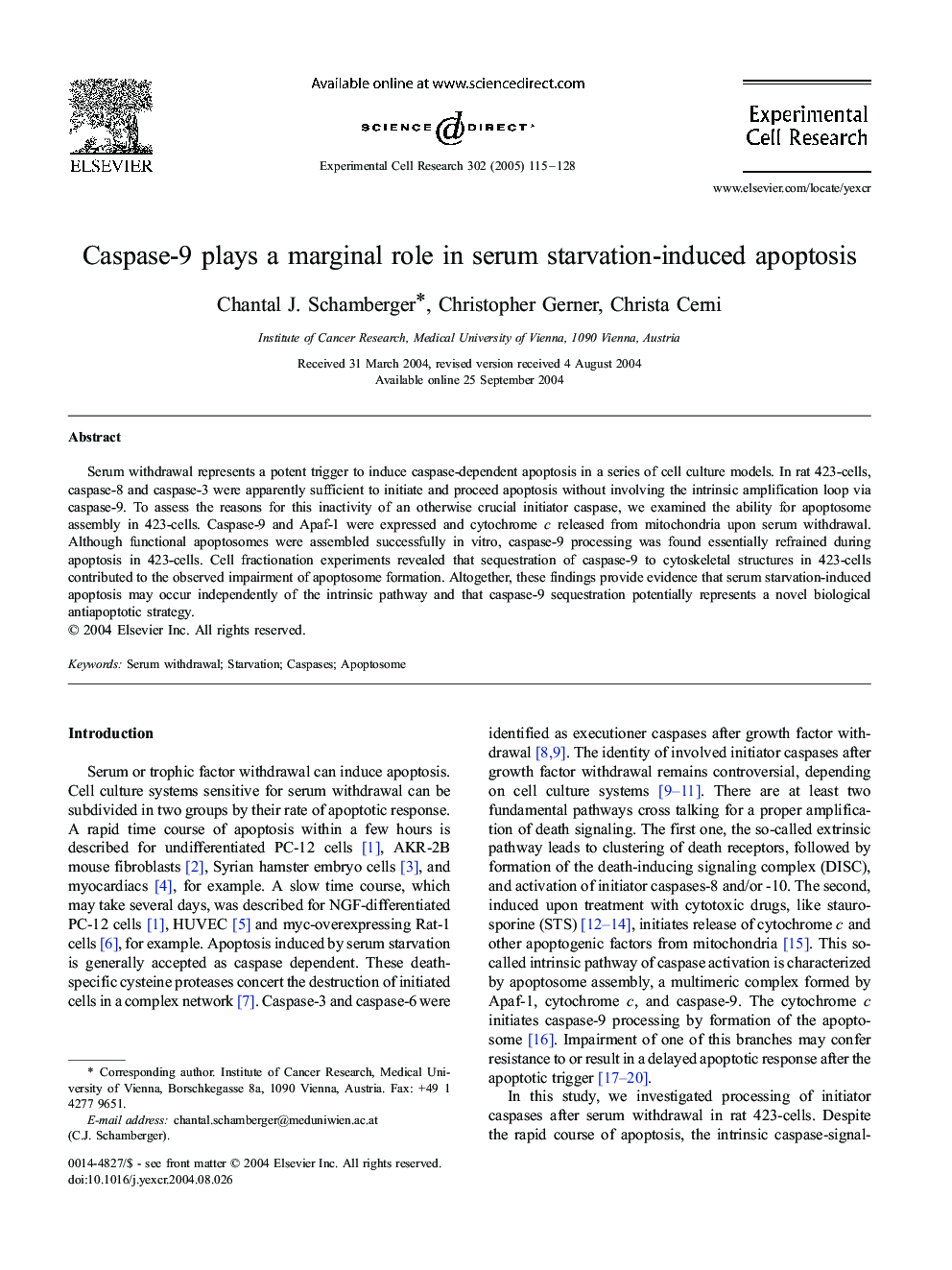| Article ID | Journal | Published Year | Pages | File Type |
|---|---|---|---|---|
| 10905663 | Experimental Cell Research | 2005 | 14 Pages |
Abstract
Serum withdrawal represents a potent trigger to induce caspase-dependent apoptosis in a series of cell culture models. In rat 423-cells, caspase-8 and caspase-3 were apparently sufficient to initiate and proceed apoptosis without involving the intrinsic amplification loop via caspase-9. To assess the reasons for this inactivity of an otherwise crucial initiator caspase, we examined the ability for apoptosome assembly in 423-cells. Caspase-9 and Apaf-1 were expressed and cytochrome c released from mitochondria upon serum withdrawal. Although functional apoptosomes were assembled successfully in vitro, caspase-9 processing was found essentially refrained during apoptosis in 423-cells. Cell fractionation experiments revealed that sequestration of caspase-9 to cytoskeletal structures in 423-cells contributed to the observed impairment of apoptosome formation. Altogether, these findings provide evidence that serum starvation-induced apoptosis may occur independently of the intrinsic pathway and that caspase-9 sequestration potentially represents a novel biological antiapoptotic strategy.
Related Topics
Life Sciences
Biochemistry, Genetics and Molecular Biology
Cancer Research
Authors
Chantal J. Schamberger, Christopher Gerner, Christa Cerni,
